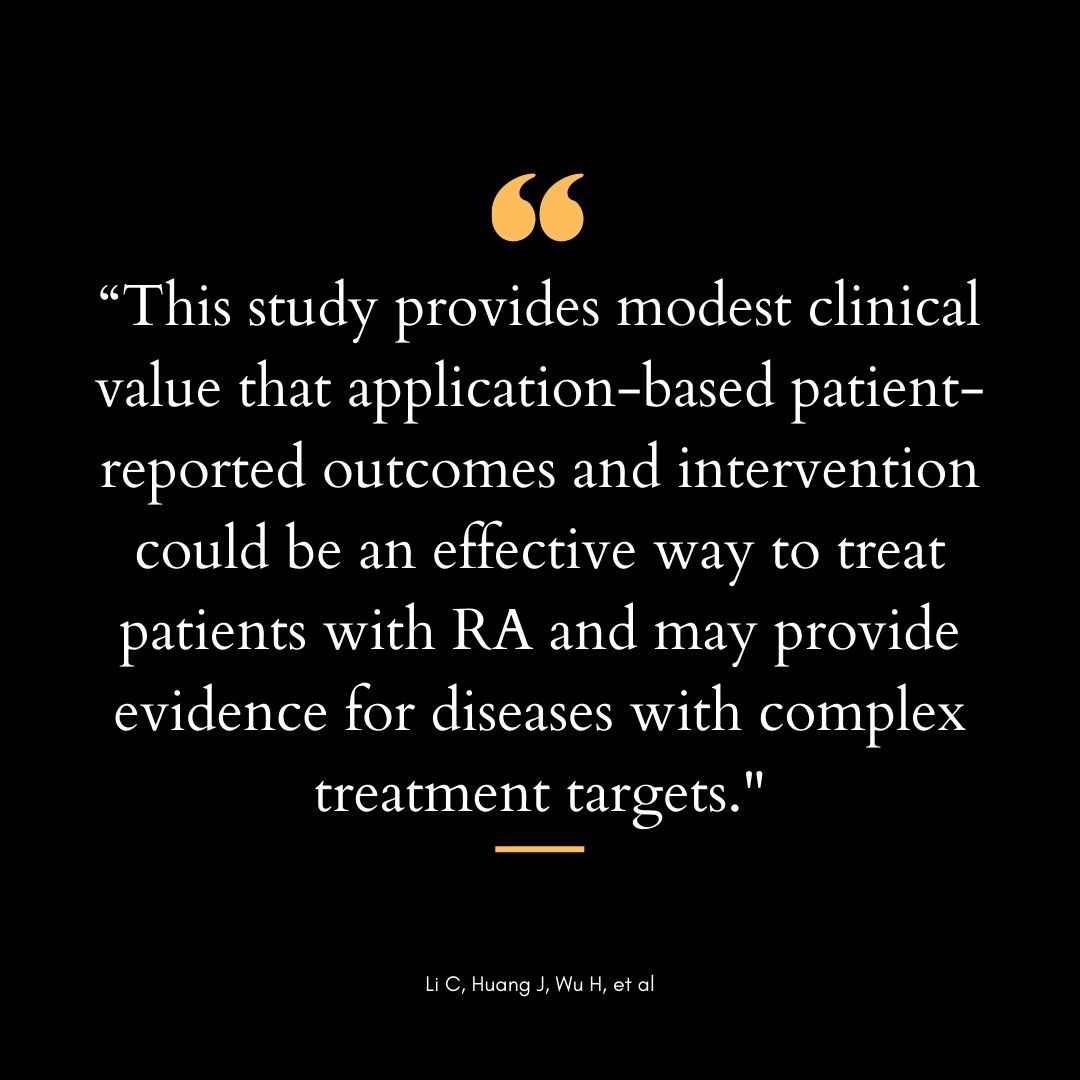Digital Health Application Associated With Increased Disease Control in RA
At month 6, 71.0% in the smart system of disease management group achieved a DAS28-CRP of 3.2 or less compared with 64.5% in the control group.
A randomized clinical trial of patients with rheumatoid arthritis (RA) demonstrated that the use of a digital health application, which included patient-reported outcomes, was linked to an increase in disease control rate, according to a study published in JAMA Network Open.1

“Digital health applications have been shown to be effective in the management of chronic diseases with simple treatment targets,” a team of Chinese investigators wrote. “The potential clinical value of digital health applications in RA has not been well studied.”
Although digital health applications have been shown to be particularly useful for patients with chronic diseases who have simple treatment targets, such as hypertension, the use of these applications with more complex treatment targets, such as RA, have not been demonstrated. Additionally, the use of patient-reported outcomes, which include disease activity, pain, and physical function, flare, self-management, and remission, has been increasingly used in the management of these conditions in recent years. These outcomes are helpful in evaluating the treatment and status of patients.2
Investigators utilized a smartphone application to evaluate whether assessing patient-reported outcomes could result in disease control for this patient population. A total of 2197 Chinese patients with RA from 22 tertiary hospitals were enrolled between November 2018 and May 2019 in the multicenter, open-label, randomized clinical trial. Eligible patients were aged 18 years or older and met the 2010 American College of Rheumatology (ACR)/European League Against Rheumatism (EULAR) criteria for RA.
Patients were assigned at a 1:1 ratio to a smart system of disease management group (SSDM) or a conventional care control cohort. Patients in the SSDM group performed a self-assessment and reported the their results monthly. Those in the control group continued to receive conventional care and maintained routine medical visits during the first 6 months. At the 6-month mark, those assigned to the conventional care control group were switched to the SSDM application for an additional 6 months.
The analysis was performed between October 2020 and May 2022. Clinicians and statisticians evaluated disease control were blinded; however, investigators and participants were not blind to the group assignment. The primary endpoint was the rate of patients with a disease activity score in 28 joints using the C-reactive protein (DAS28-CRP) of 3.2 or less at month 6. Secondary outcomes included the change in simplified disease activity index (SDAI), the change in clinical disease activity index (CDAI), changes in tender and swollen joint count, flare rate, adverse events, moderate-to-good EULAR response rate, and changes in the Hospital Anxiety and Depression Scale (HADS).
The mean age of patients was 50.5 years and most (82.5%) were female. At month 6, a significant increase in the rate of DAS28-CRP of 3.2 or less was demonstrated. In the SSDM group, 71.0% (n = 780/1099) achieved the primary endpoint compared with 64.5% (n = 708/1098) in the control group (difference between groups, 6.6%; 95% CI, 2.7% - 10.4%; P = .001). At the 12-month mark, 77.7% of patients in the control group met the primary endpoint, which was comparable to 78.2% in the SSDM group (difference between groups, −0.2%; 95% CI, −3.9% - 3.4%; P = .90). Regarding secondary outcomes, patients in the SSDM group had a higher moderate-to-good EULAR response rate. Changes in CDAI and SDAI significantly improved and were comparable in both groups.
“This study provides modest clinical value that application-based patient-reported outcomes and intervention could be an effective way to treat patients with RA and may provide evidence for diseases with complex treatment targets,” investigators concluded.
References
- Li C, Huang J, Wu H, et al. Management of Rheumatoid Arthritis With a Digital Health Application: A Multicenter, Pragmatic Randomized Clinical Trial. JAMA Netw Open. 2023;6(4):e238343. Published 2023 Apr 3. doi:10.1001/jamanetworkopen.2023.8343
- van TuylLH, MichaudK.Patient-reported outcomes in rheumatoid arthritis.Rheum Dis Clin North Am. 2016;42(2):219-237. doi:10.1016/j.rdc.2016.01.010